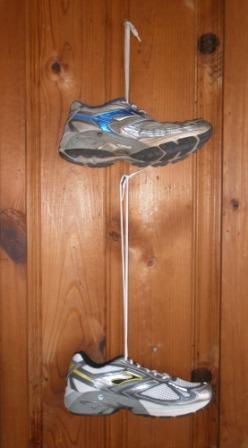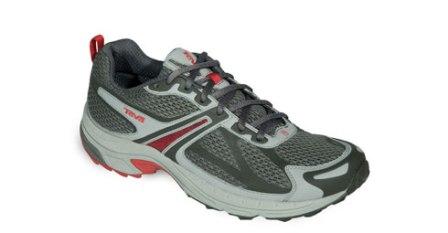Running Shoe Laces: Does Longer Mean Better?
Wednesday, March 4th, 2009 The search for the perfect running shoe is over. I decided to go with the same brand of running shoe I had before. I tried many different types of shoes, ran in them, did my research and eventually could not find a running shoe that I liked better than my Brooks Adrenaline GTS 8s. I guess if the shoe fits, run in it. There’s no need to reinvent your “wheels.”
The search for the perfect running shoe is over. I decided to go with the same brand of running shoe I had before. I tried many different types of shoes, ran in them, did my research and eventually could not find a running shoe that I liked better than my Brooks Adrenaline GTS 8s. I guess if the shoe fits, run in it. There’s no need to reinvent your “wheels.”
Although I found my perfect pair of running shoes, I still have a problem with the shoe laces being too long. It seems to be the norm in running shoes these days. I don’t know why. So now I have to find the right laces for my perfect running shoes. Why is it so difficult to make me happy? Because I demand perfection. Well, at the very least, I demand being close to spectacular.
I didn’t realize how diverse shoe laces had become until I started doing my research. You’ve got the flat, the fat, the round, the colored, the infants, the big foot, the waxed, the elastic, even the butterfly and the daisy styles. These are just some examples, there is a plethora of other shoe laces out there. It became too much information for me to properly delineate. Apparently there are 2 Trillion ways to lace up a standard 12-eyelet pair of shoes. Click here if you want to learn more about general shoe lacing and tying techniques from Ian, a shoelace expert and connoisseur. It’s actually pretty interesting. Then, go to your parents house and yell at them for not teaching you how to properly tie your shoes when you were 5 years old. I personally wore Velcro shoes until I was about 10 years old. Why learn to tie your shoes when you can wear Velcro? I was so much smarter back then.
So, although I bought the exact same pair of running shoes that I had previously owned, I’m always looking to try new things, but I just don’t understand why running shoe laces have been getting longer and longer as time passes. Are people’s feet evolving to be wider? I didn’t realize homosapiens had balance issues. Maybe my feet are just that skinny and when I tighten my shoes I get all a lot of that extra lace. And no, it’s not true what they say about the width of one’s feet being directly proportional to other body parts. Shattering stereotypes is my middle name baby. Chris Shattering Stereotypes Barber, B.A. Don’t act like your not impressed.
I don’t think I’m smarter than the shoeientists and shoeginneers at Nike, Brooks, or New Balance; so with my last pair of Brooks Adrenaline 8s I tried using the standard model laces that came with the shoes for the first couple of months. Upgrades are a rip off anyways. As my shoes tightened to my feet, the longer my laces hung out. I’m all for “hanging out” but it started to become a hazard for me. I started to trip over the excess string, falling to the ground on multiple occasions. Even though my falls were typically when I was running with someone of a slower running pace, I needed laces that would be safe for any pace I chose to run. I finally broke down and bought some standard shorter, thinner shoe laces at the dollar store and put them in my running shoes. I’m going to do it again for my new running shoes. I’ll probably get some other things at the dollar store too. Steak sauce, “orange” cleaning solution, maybe a spatula or an extension cord. I don’t know. I don’t know if I’ll have enough time.
I honestly can’t understand why the thicker, round, and longer laces that come on most running shoes today are better. The thickness and roundness of the laces helps the knot hold better but the length is just plain ridiculous. Even when you double or triple knot the laces they end up being way too long. Even Shaq would have excess lace on his running shoes. Not that Shaq runs. That’s for Stevey Nash to worry about.
Our American way of thinking that bigger is better doesn’t always ring true. “Super-sized” food just makes us fatter, SUVs use way too much expensive gas, and big houses come with high mortgages that Americans are struggling to afford right now. Let’s stop this Manifest Destiny of running shoe laces before it’s too late. Next thing you know we’ll be buying Alaska or Louisiana! The horror.



 If running is 90% mental then why not think about the mental aspect of
If running is 90% mental then why not think about the mental aspect of